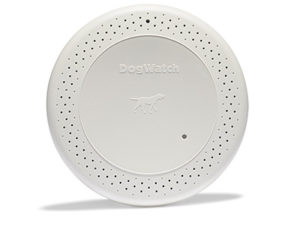DogWatch Dog Story: Daisy
Daisy and her family moved to Eden Prairie from out of state, and they immediately had a DogWatch hidden fence installed. She learned about her new yard, her new neighbors, and her boundaries all at the same time, and she easily learned where she could and couldn’t go. She’s a sweet, loving girl. But like many dogs, she’s very attached to her owners.
The combination of that attachment and the new house caused Daisy to start getting into trouble when she was home alone. She would scratch at all the doors and ruin the frames. Eventually she learned how to open the sliding back door. When her family would come home Daisy was outside, and they were so confused! Luckily she stayed in the yard, but still it wasn’t ideal.
Indoor Boundaries were the solution for Daisy. We set up the IB-100 disc near the sliding door and put up some indoor flags keep Daisy away. She knew what the flags meant from her recent outdoor training. But if she felt brave and approached that door, she got a correction. She stopped letting herself outside and scratching at that door.
After she got used to her new house and got some new toys to keep her busy, Daisy and her family were settled and happy in Eden Prairie. They had to get some new doors, though.

